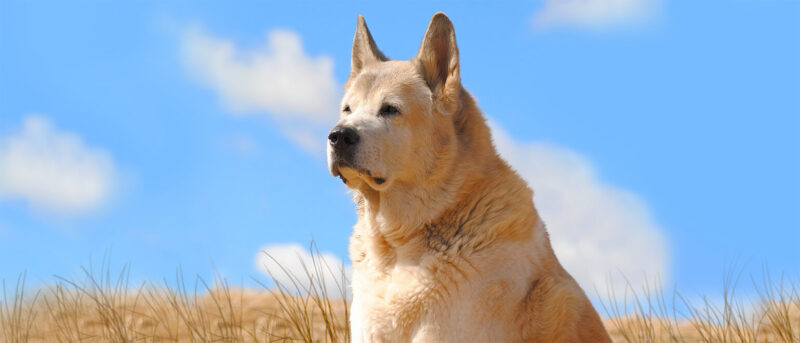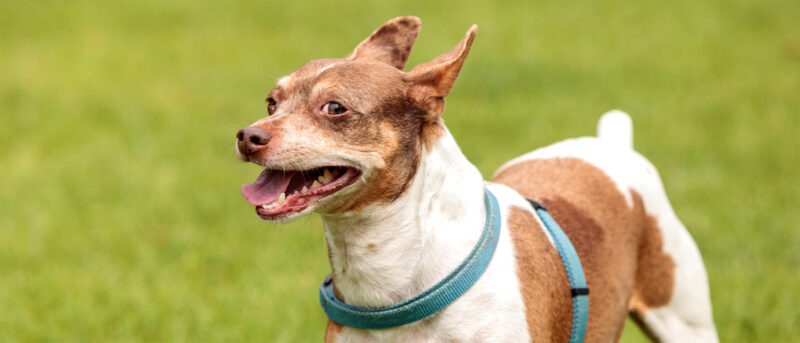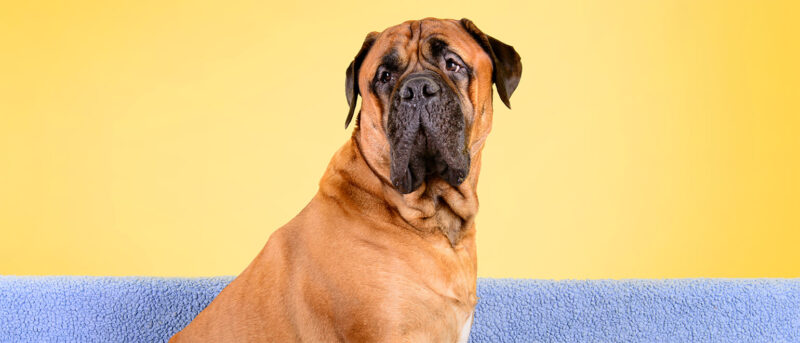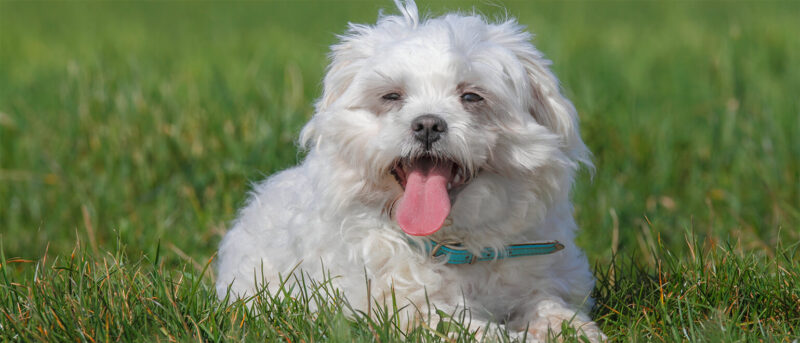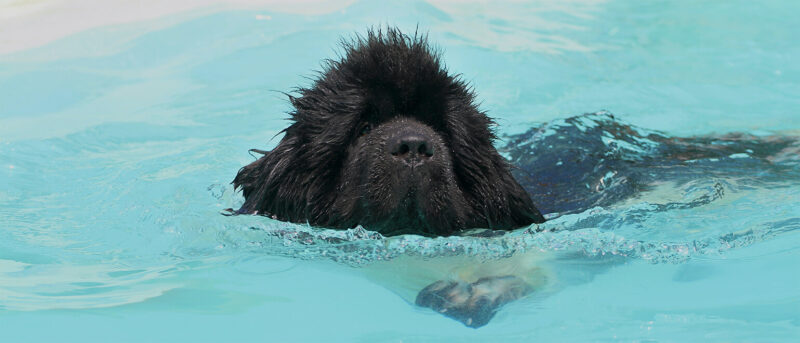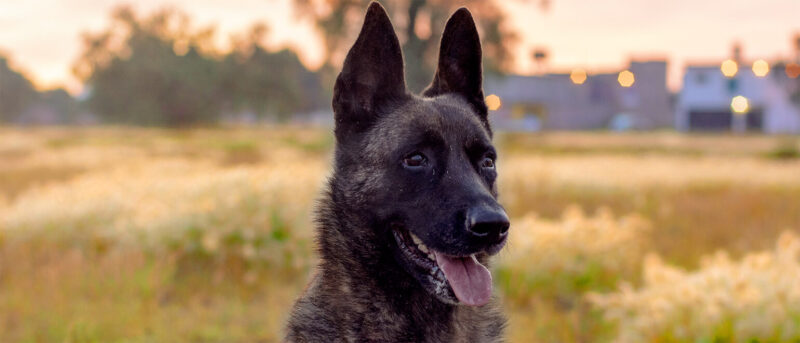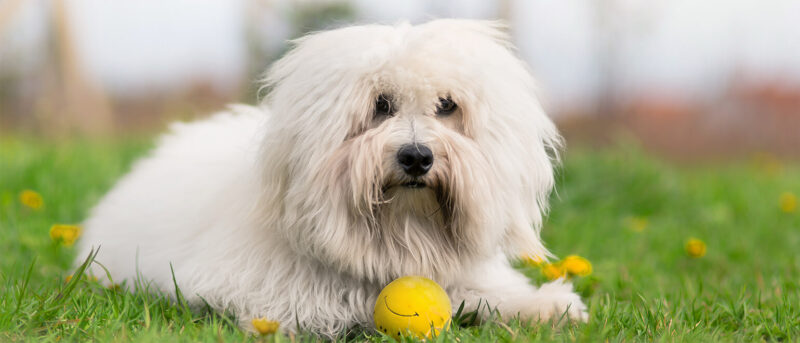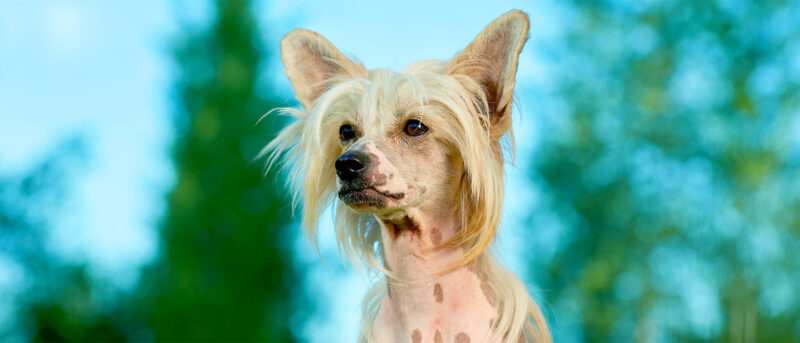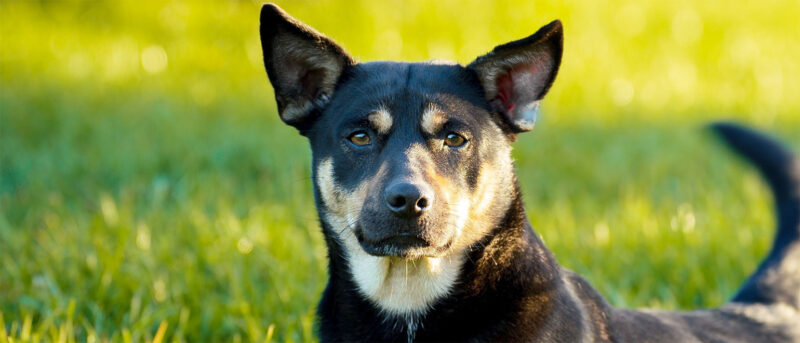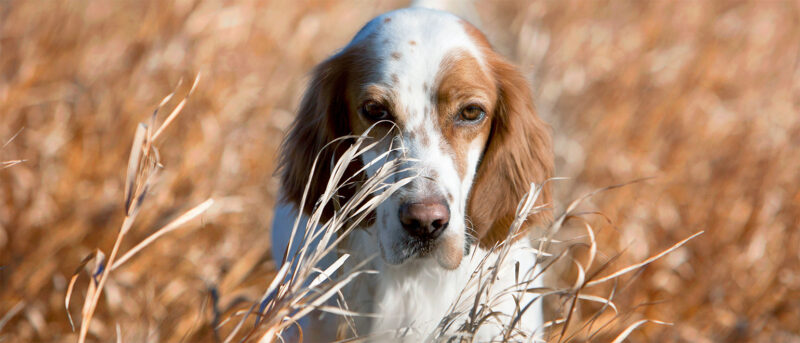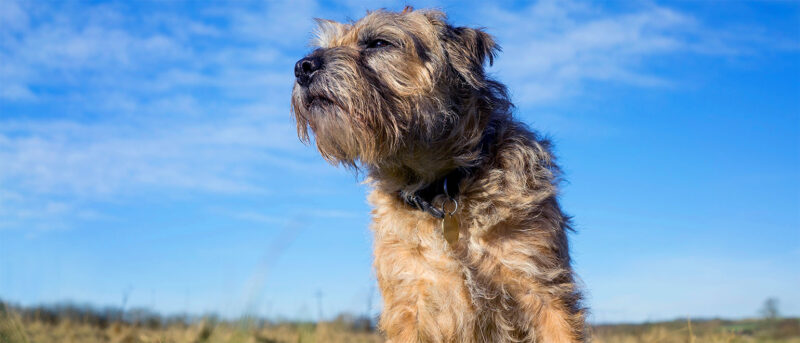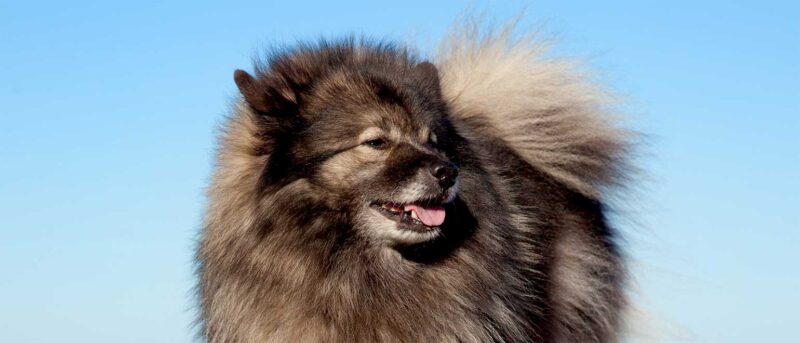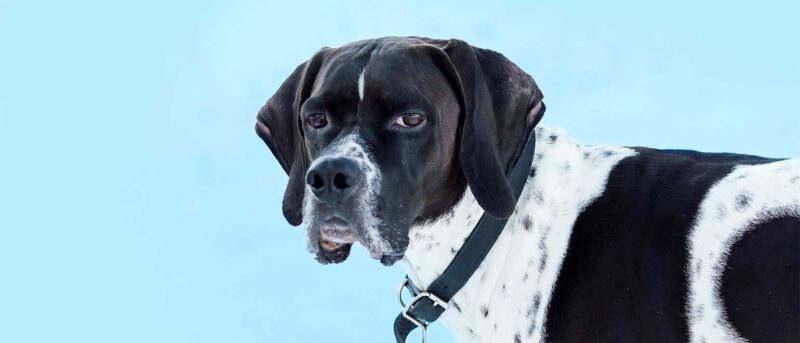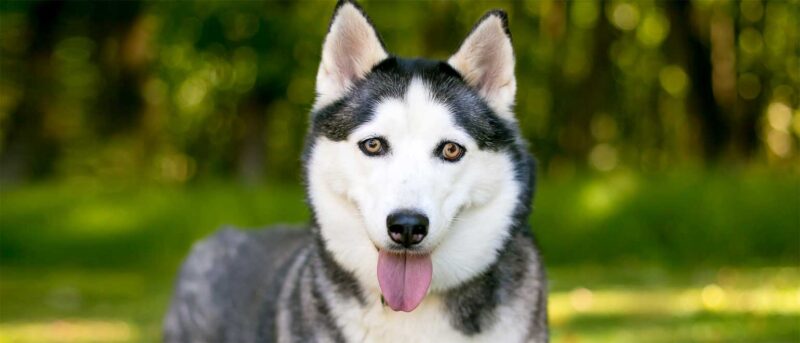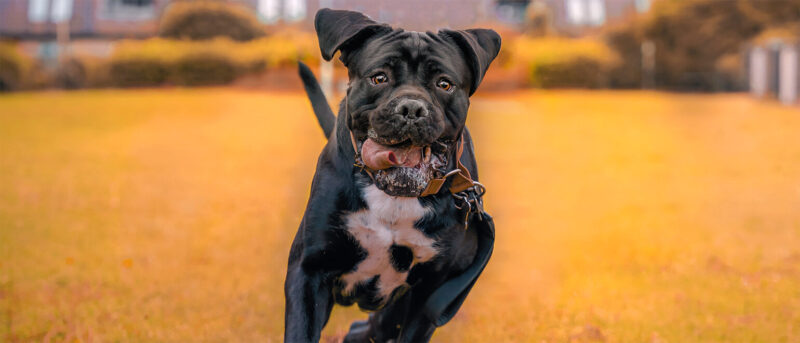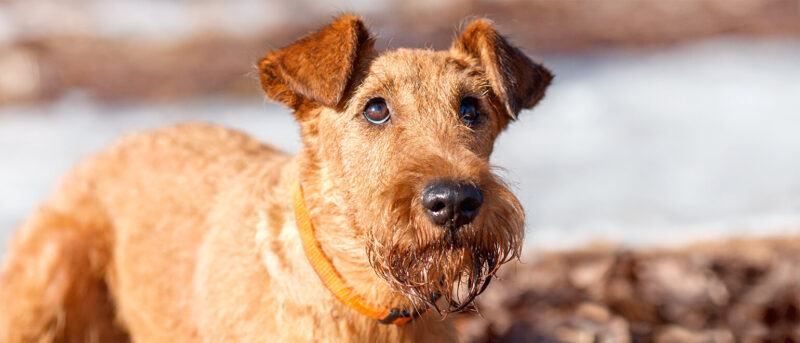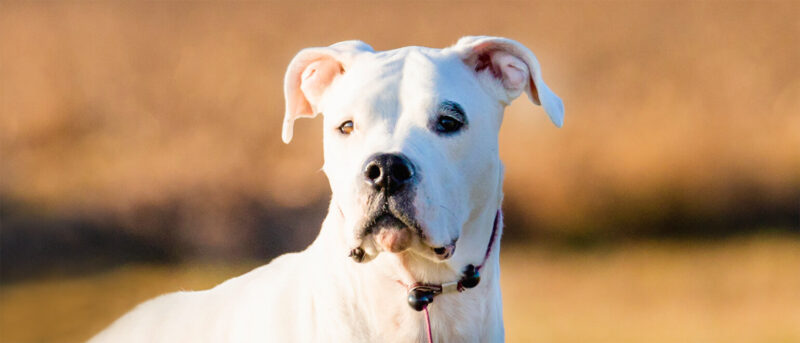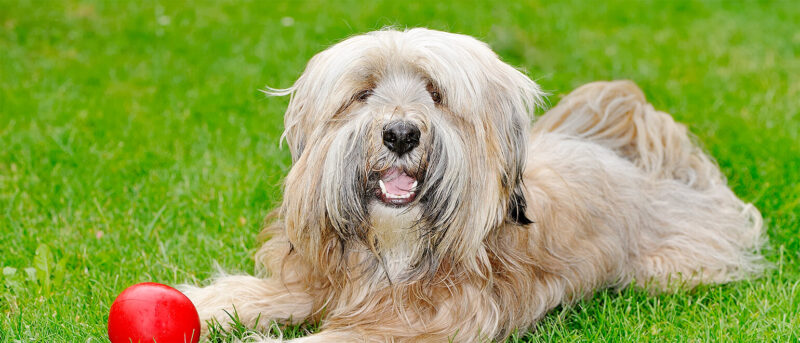Boxer Dog Breed Temperament & Personality [Full Guide]
With their square jaws and naturally lean bodies, boxers are one impressive dog breed. Despite their imposing looks, these dogs are known to be loyal, loving, energetic, intelligent, and wonderful with children. The unique personalities of these dogs go hand in hand with their history as bull baiters, police dogs, and loving companions. Stubborn and […]
With their square jaws and naturally lean bodies, boxers are one impressive dog breed. Despite their imposing looks, these dogs are known to be loyal, loving, energetic, intelligent, and wonderful with children. The unique personalities of these dogs go hand in hand with their history as bull baiters, police dogs, and loving companions. Stubborn and at times, headstrong, this breed may pose quite a challenge for first-time dog owners.
If you’re willing to invest time and patience into training these beautiful dogs, they will shower you with love and devotion for life. To see if a boxer is the best dog breed for you, just keep reading this in-depth article.
Boxer Dog Characteristics
A boxer typically has a moderate-sized physique characterized by a sturdy back and well-developed muscular limbs. Their chests are broad, and they sport sleek, short coats. The boxer’s defining feature is their squarely-shaped head, which gives them their iconic grin and name.
These dogs also have a squared, blunt snout that appears smashed in.
Boxers have long tails and naturally floppy ears, giving them a soft, puppy-like look. That being said, it’s not uncommon to see these dogs with their tails and ears trimmed.
This practice of clipping the ears and tail of the dog is considered harmful by some, making it a very controversial topic in the dog community.
Boxer Dog Size
Depending on their gender, the size of these dogs ranges from medium to large.
Females of this breed average around 21-23 inches in height, while male boxers typically measure between 23-25 inches in height. Males of this breed weigh 60-85 lbs on average. Generally, females weigh about 15 lbs less.
Both female and male boxers make ideal guard dogs and companions due to their size and loyal personalities.
Boxer Dog Personality
For the first three years of your Boxer’s life, you can count on them to be rambunctious, silly, and full of energy. This breed does tend to mellow out once they are fully mature, although many adult boxers are still very energetic, even as they age.
Over the course of their lives, many boxers will exhibit signs of stubbornness. That being said, impatience and harsh discipline can lead to behavioral issues in these dogs, making it important to temper your discipline.
The optimal approach to managing this breed involves patience and plenty of positive reinforcement. Given their headstrong personality, boxers benefit from a firm owner who can provide discipline, training, and a consistent schedule.
Boxers are very loving and are known for becoming quite attached to their owners. They often follow their loved ones from room to room when at home as they dislike being left alone.
Boxers are extremely loyal to their owners and to all other members of their household and they will always try to protect the home.
This breed is more inclined to experience separation anxiety compared to other dog breeds, making it essential they get enough exercise and mental stimulation. Establishing a daily exercise regimen is essential for maintaining both the emotional and physical well-being of a boxer.
Despite their large size, boxers are an affectionate breed and will definitely attempt to be your lap dog from time to time. They love curling up with their owners and being around them in general. This devotion will sometimes manifest itself as your boxer being suspicious of strangers but this is because they are overprotective of their loved ones.
Just because they’re little love bugs doesn’t mean they’re extroverts. Believe it or not, boxers have a naturally timid personality unless their owners go out of their way to raise them differently.
How to Care for a Boxer
There are three key elements that are crucial in raising a boxer: exercise, grooming, and training. As long as you consistently attend to these areas, everything else should be easy!
Of course, we can’t forget the necessity of regular vet visits and a high-quality diet. These things are all essential to your dog’s health.
Now, let’s dive deeper into these three fundamental areas of pet care.
Boxer Dog Exercise
There are so many fun ways to exercise your boxer: running, logging, swimming, tug of war, playing fetch, and even playful wrestling. To stimulate your dog’s mind, look for toys that require memory and patience, such as chew toys with layers and doggy puzzle games.
Taking your boxer to the dog park is also a great idea. The open space of the dog park is an ideal way to burn off some of your dog’s energy and dog parks can also be help improve your pet’s socializing skills. To remain happy and healthy, your boxer will need between 45 minutes to two hours of exercise a day.
For some dogs of this breed, the more exercise, the better!
With that in mind, if you live in a smaller space or a home without a yard, ensuring your dog gets the exercise it needs may be challenging. But don’t let that scare you off! If you are willing to commit to brisk walks and trips to the dog park, you can make it work!
Ideally, plan for an hour of daily exercise for your boxer. You can divide activities into multiple sessions throughout the day to prevent overexertion and safeguard your dog’s well-being. Just like with humans, overexertion in dogs can result in injury.
Experts note that dogs place around 60% of their weight on their front legs, putting a ton of pressure on those joints during intensive physical activity. Engaging in high-intensity activities such as running, jumping, or wrestling can also put additional strain on the front limbs of boxers.
Making sure your pet gets enough exercise can help them to live longer, healthier, and happier. If you’re unsure of how much exercise is best for your dog, be sure to consult with your vet.
Boxer Dog Grooming
With their short, polished coats, boxers are typically easy to keep groomed.
Just keep a sturdy, rubber brush on-hand for quick at-home grooming. To help with excess shedding, brush their coat for about five minutes or or twice a week.
Believe it or not, boxers are one of the few dog breeds that is skilled at keeping themselves cleaned. Their ability to self-groom means that just one monthly bath will be enough to keep them looking good (unless they get into a mess like a big puddle).
You should also plan on clipping their days around once a month. If your boxer is often active outdoors, their nails may naturally wear down. However, it’s important to regularly check and trim their nails to avoid any potential injuries caused by overgrown nails.
Last but not least, oral health may be tricky with a boxer. Since boxers have a slight upward curve in their jawline, they can experience an issue of impacted teeth that don’t emerge from the gums. This is a unique trait and makes this breed’s teeth very different from other dogs.
Due to their teeth not fully breaking through their gums, boxers may experience awkward teeth placement, potentially leading to the biting of tiny holes in their gums. This makes it extremely important to brush their teeth daily. A regular oral care routine can help prevent plaque and tartar buildup and it can help with early detection of any dental issues. Providing dental chew toys or dental treats can also aid in maintaining healthy gums and promoting dental cleanliness (no stinky dog breath).
Boxer Dog Training
Boxers are known for their quick learning ability, which makes training them easy for owners. However, as we’ve already mentioned, a boxer’s determined nature can sometimes express itself as stubbornness.
If you’ve never experienced stubbornness from a dog, you may have more difficulty training them. Of course, a new dog owner can raise an obedient dog but having prior experience is definitely helpful. Training a boxer typically demands patience, understanding, and consistency.
Sweet and sensitive, this breed does not respond well to negativity or stressful corrections. Training a boxer effectively includes providing encouragement, repetition, positive reinforcement, and consistency.
Many pet owners find that training a boxer is immensely rewarding due to the bond and trust it fosters with their pets.
Dog owners have noted that leash training tends to be the hardest part of training this breed.
Boxers, being powerful dogs, may naturally pull or yank as they attempt to walk ahead of their owner.
Another challenging behavior to address in boxers is their tendency to jump on people. Jumping on someone is a way they express their love and affection for someone they care about. The most effective way to address any behavioral issue is to start working on it as early as possible.
There are numerous tips, tricks, and training methods available to help with leash training or addressing jumping behavior. Resolving any bad behaviors will require time, experimentation, and, most importantly, plenty of love and patience.
Boxer Dog History
Boxers have a rich history dating back to ancient times. Their lineage can be traced to the renowned war dogs of the Assyrian Empire and German breeds.
During the late 1800s, Germans selectively bred Bullenbeissers, energetic dogs originally developed for bull baiting. These versatile canines were also used as formidable big-game hunters, renowned for their ability to track and pursue bears, wild boars, bison, and other large prey animals.
In the past, tracking and hunting dogs of this size and ability were predominantly owned by the rich, who would host large hunting expeditions on their vast properties. Since Bullenbeissers were predominantly owned by the wealthy, this breed’s popularity declined sharply after the downfall of the German nobility. After this time of change, Bullenbeissers were crossbred to the point of extinction.
This crossbreeding with mastiffs and old English bulldogs is what brought about the creation of the boxer breed. The boxer breed experienced a resurgence in Europe during the First World War because of their remarkable tracking skills, loyalty, and strength.
After the war, this breed began to experience popularity in America. Boxers were seen as great working dogs across the United States. Similar to modern-day German Shepherds, boxers were used as police dogs, lifeguards, cattle herders, and even seeing-eye dogs.
Boxer Health Problems
Since Boxers are so naturally active, they tend to be generally healthy dogs. However, there are a few health conditions that boxers may be predisposed to.
Due to their sensitivity to extreme heat or cold weather, Boxers are meant to be indoor dogs.
Below are some of the most common health issues commonly observed in boxer breeds.
Heart Issues
Heart defects, such as a narrowed aorta, have been reported in boxers. This health condition places excessive strain on the heart as it works harder to pump blood. It is an inherited condition that veterinarians can detect early.
These heart issues can result in symptoms like fatigue, fainting, and other potentially severe complications.
Gas Problems
This issue occurs when air of gas suddenly inflates or expands a boxer’s stomach. The air or gas then twists their stomach, preventing them from burping and naturally getting rid of the trapped gas.
Trapped air can also slow the movement of blood back to their and cause their blood pressure to dangerously plummet. This can result in shock, requiring immediate medical intervention.
Signs of gastrointestinal distress in boxers may include loss of interest, bloating, lethargy, excessive drooling, and dry heaving without vomiting.
Hip Issues
Hip issues are prevalent amongst many dog breeds, including boxers, often stemming from hereditary factors but they can also be triggered by external factors.
This condition arises when the thigh bone encounters difficulty fitting into the hip joint. Symptoms may include alterations in behavior, loss of appetite, and lethargy, among others.
Boxers may exhibit signs of discomfort, although many tend to conceal their symptoms until they become sadly unbearable.
If left untreated for an extended period, hip problems can lead to the development of joint issues in some cases.
Related Product: Penelope’s Bloom’s #1 CBD Joint + Mobility Chews For Dogs
Hearing Issues
Statistically, one in five boxers will have hearing issues. This is because hearing problems can be a genetic condition in boxers.
White boxers tend to have more issues with their hearing than other colors. For further details on that topic, please refer to the coat color section below.
Skin Issues
Skin issues, such as mange, are more commonly encountered in puppy boxers than in adult dogs. This skin issue tends to be caused by mites.
These mites reside in the dog’s skin and are typically transmitted from the mother to her puppy during birth.
This mite typically doesn’t pose a problem unless the dog’s immune system is compromised. In dogs with underlying health issues, controlling these mites can be challenging.
In sick dogs, the mites can multiply quickly, resulting in itchiness and red spots. Excessive scratching may lead to further skin problems and hair loss.
Eye Problems
Eye issues, such as the growth of opaque areas within the eye, can be common in dogs. Usually, both eyes are affected when it comes to this particular eye issue.
The good news is this eye condition doesn’t always affect a dog’s vision. It’s usually painless unless sores begin to appear.
It is best to check in with your vet if you notice a change in their eyes or vision as an untreated and advanced version of this condition can lead to loss of sight.
Breathing Issues
Boxers can also be prone to breathing issues. This issue can be triggered by dust, mold, pollen, aerosol sprays, and food allergies.
Breathing issues in dogs are often experienced as itching, hives, and excessive drooling.
Due to their facial shape, untreated breathing issues may lead to dermatitis and other skin conditions for your boxer.
Nutrition and Feeding for Boxers
Your little four-legged athlete needs nutrient-rich dog food! Boxers require a high-quality, protein-packed diet. Two major nutrients your boxer’s food should have include L-carnitine and calcium.
Boxers are prone to food allergies, so, be sure to take note of any ingredient that causes adverse reactions in your dog, such as corn, soy, wheat, and yeast. The good news is that none of these common ingredients are necessary for your dog’s health. To round out their wellness supplements, you can add Penelope’s Bloom’s CBD Oil for dogs to their meals!
As with human food, it’s best to avoid dog foods with artificial coloring, highly processed foods, artificial flavoring, and synthetic food ingredients.
Coat Color
White, fawn, and brindle are the three standard types of coat colors for boxers. These three colors are for purebred boxers, mixed breeds have a far larger range of coat colors.
Other characteristic markings include a black mask, white markings, a black mask with white markings, fawn markings, and brindle markings.
Scroll down to read more about these three most common boxer coats.
White Boxer Dogs
Approximately 25% of all boxers are white boxers. It’s easy to understand why, their gorgeous white coats are beautiful!
That being said, sadly, white boxers tend to be born deaf more than other colors. The higher incidence of deafness in white boxers is attributed to a genetic predisposition linked to the gene responsible for their white coat color.
Brindle Boxer Dogs
Brindle refers to a pattern, not a color. Brindles can be made up of light or dark stripes. Sometimes, the stripes of the brindle pattern can be so dark that it’s difficult to see unless you view their coat under direct light.
It is also common for brindle boxers to have some white markings on their chest and paws.
Fawn Boxer Dogs
Typically, fawns are closer to beige and brown colors. Fawns can also include darker brown shades or lighter/paler beiges.
Although some offer “black” boxers to potential dog owners, know that this may be a sign that they are not selling you a purebred boxer. Genetically, boxers with a black coat do not exist within the actual breed.
The reason a boxer dog may appear black is because it is mixed with another dog breed. In rare circumstances, it may be that the purebred boxer has a dark fawn color or brindle color with wide dark stripes, giving them the appearance of a black coat.
There is also the possibility of a reverse brindle. This means the stripes of their coat are so thick and dominant that it’s hard to see their true fawn coat underneath the striping.
Children and Other Pets
Despite their sometimes ferocious appearance, these dogs simply melt when they’re around newborns and young children. Boxers make wonderful pets for owners with children! They can often be seen keeping a close eye on the young kids of their home and make excellent protectors.
Introducing a boxer to a small child may be overwhelming for the kid. They love to jump on people to show affection but their strength and size might be too much for a young child. Make sure to correct this behavior immediately to stop your dog from doing this.
As noted before, correcting this over-the-top behavior is easiest when they’re puppies because they can become too stubborn to learn new things as adult dogs.
While boxers are known to be friendly to other pets in the home, they may have issues if they were not properly socialized in their youth.
This territorial nature is common with most dog breeds. By socializing them at a young age and exposing them to different animals, they will be much better about welcoming new pets to the home.
To put it plainly, a puppy boxer is far more likely to form a positive connection with a cat than a one-year-old boxer who has never been around cats. As dogs age, they tend to become less friendly towards unfamiliar animals.
Rescue Groups for Boxers
Hooray! There are so many wonderful official rescue groups for boxers across the US!
Across America Boxer Rescue, Adopt A Boxer Rescue, and Blue Ridge Boxer Rescue are some of the most notable and trustworthy rescue groups for boxers. To find local rescue groups, make sure to check out the American Boxer Club.
These are just a few of the thousands of charitable groups doing fantastic work for boxers. If you’re ready to adopt, make sure to check out your local ASPCA or high-kill dog shelters in your area first. The ASPCA is a fabulous organization that helps abandoned dogs find safe and loving homes.
When you adopt with the ASPCA, you can help save a boxer that would more than likely be put down due to space limits.
Boxer Dog Breed Organizations
Each state contains a variety of local organizations dedicated to the treatment, safety, rescue, and education of boxers, providing vital support and resources for these beloved dogs and dog owners.
One of the top dogs of these groups is The American Boxer Club which does so many incredible things for boxers across the nation.
More About This Dog Breed
Loyal, intelligent, energetic, and sweet, boxers make wonderful pets. Their stubborn nature and high energy may be intimidating to first-time dog owners who may do better with low-maintenance dogs. Any dog owner can train a boxer if they are patient and consistent enough with their discipline.
Yelling at this breed or giving negative reinforcements and corrections is not helpful for this breed. New pet owners may think this is an effective way to train a dog but it will not be effective with a boxer.
Boxers are highly perceptive dogs and can quickly sense faltering leadership or stress in their owners. This breed thrives under the guidance of a loving yet firm leader. That being said, many owners find that training a boxer is immensely rewarding and builds an incredible bond between owner and dog.
If you believe you’re up to the challenge of raising a boxer, you’ll be rewarded with unwavering loyalty, steadfast friendship, and unconditional love from your four-legged companion.










